Oxadiazon
- CAS NO.:19666-30-9
- Empirical Formula: C15H18Cl2N2O3
- Molecular Weight: 345.22
- MDL number: MFCD00128056
- EINECS: 243-215-7
- SAFETY DATA SHEET (SDS)
- Update Date: 2024-11-04 20:04:50
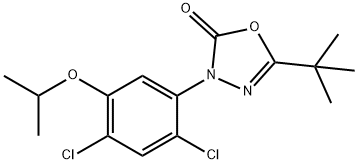
What is Oxadiazon?
Chemical properties
Pale Yellow Solid
Chemical properties
Colorless crystalline solid. Odorless.
The Uses of Oxadiazon
A commonly used herbicide/pesticide.
The Uses of Oxadiazon
Herbicide.
The Uses of Oxadiazon
Preemergence herbicide used for controlling certain annual grasses (e.g., bluegrass, barnyardgrass, crabgrass, goosegrass, sprangletop) and broad-leaved weeds (e.g., cudweed, dayflower, filaree, groundsel, jimsonweed, morningglory, mustards, pigweed, redmaids, smartweed, sowthistle, velvetleaf) in turf, lawns, orchards and ornamentals.
What are the applications of Application
Oxadiazon is a pesticide that is insoluble in water
Definition
ChEBI: Oxadiazon is an aromatic ether.
General Description
Crystalline solid. Used as an herbicide.
Air & Water Reactions
Dust may form an explosive mixture in air.
Reactivity Profile
Oxadiazon is a diazo compound. Azo, diazo, azido compounds can detonate. This applies in particular to organic azides that have been sensitized by the addition of metal salts or strong acids. Toxic gases are formed by mixing materials of this class with acids, aldehydes, amides, carbamates, cyanides, inorganic fluorides, halogenated organics, isocyanates, ketones, metals, nitrides, peroxides, phenols, epoxides, acyl halides, and strong oxidizing or reducing agents. Flammable gases are formed by mixing materials in this group with alkali metals. Explosive combination can occur with strong oxidizing agents, metal salts, peroxides, and sulfides.
Trade name
CARPETMAKER®; CHIP SHOT®[C]; GOLD KIST®; PAR EX®; PRO GROW®; REGAL O-O®; REGALSTAR®; RONSTAR®; RP-17623®; TURFIC®; VERTAGREEN®; WILBRO
Safety Profile
Moderately toxic by ingestion, inhalation, and skin contact. When heated to decomposition it emits toxic vapors of NOx and Clí.
Potential Exposure
An oxadiazolinone/oxidiazole preemergence and early postemergence herbicide used to control annual grasses, sedges, and broadleaf weeds. Originally registered for use on turf and ornamentals; has wide use on golf courses.
Environmental Fate
Soil. The reported half-life in soil is approximately 3–6 months (Hartley and Kidd,
1987). Oxadiazon degraded slowly in both moist and flooded soils. After 25 weeks, only
0.1–3.5% degraded to carbon dioxide and 0.5–1.1% as volatile products. Metabolites
identified included oxadiazonphenol, oxadiazon acid and methoxyoxadiazon (Ambrosi et
al., 1977).
Plant. Reported half-lives of oxadiazon in rice and orchard fruit are 1–2 and 3–6
months, respectively (Hartley and Kidd, 1987).
Shipping
UN3077 Environmentally hazardous substances, solid, n.o.s., Hazard class: 9; Labels: 9-Miscellaneous hazardous material, Technical Name Required.
Incompatibilities
Dust may form explosive mixture in air. Diazo compounds can detonate. This applies in particular to organic azides that have been sensitized by the addition of metal salts or strong acids. Toxic gases are formed by mixing materials of this class with acids, aldehydes, amides, carbamates, cyanides, inorganic fluorides, halogenated organics, isocyanates, ketones, metals, nitrides, peroxides, phenols, epoxides, acyl halides, and strong oxidizing or reducing agents. Flammable gases are formed by mixing materials in this group with alkali metals. Explosive combination can occur with strong oxidizing agents, metal salts, peroxides, and sulfides. This chemical is sensitive to prolonged exposure to heat. This chemical is incompatible with strong oxidizing agents.
Waste Disposal
It is the responsibility of
chemical waste generators to determine the toxicity and
physical properties and of a discarded chemical and to
properly identify its classification and certification as a hazardous
waste, and to determine the disposal method. United
States Environmental Protection Agency guidelines for the
classification determination are listed in 40 CFR Parts
261.3. Additionally, waste generators must consult and follow
all regional, national, state, and local hazardous waste
laws to ensure complete and accurate classification and disposal
methods. Follow recommendations for the disposal of
pesticides and pesticide containers. Containers must be disposed
of properly by following package label directions or
by contacting your local or federal environmental control
agency, or by contacting your regional EPA office.
Do not discharge into drains or sewers. Dispose of waste material as hazardous waste using a
licensed disposal contractor to an approved landfill. Consult with environmental regulatory agencies for guidance on acceptable disposal practices. If allowed, incineration with effluent gas scrubbing is recommended. Containers must be
disposed of properly by following package label directions or
by contacting your local or federal environment
Properties of Oxadiazon
| Melting point: | 88-90°C |
| Boiling point: | 417.0±55.0 °C(Predicted) |
| Density | 1.4130 (rough estimate) |
| refractive index | 1.6140 (estimate) |
| storage temp. | Sealed in dry,2-8°C |
| solubility | Chloroform (Slightly), Ethyl Acetate (Slightly) |
| pka | -2.73±0.40(Predicted) |
| form | Waxy Solid |
| color | Light yellow to yellow |
| Water Solubility | 0.7mg/L(24 ºC) |
| BRN | 558070 |
| CAS DataBase Reference | 19666-30-9(CAS DataBase Reference) |
| NIST Chemistry Reference | Oxadiazon(19666-30-9) |
| EPA Substance Registry System | Oxadiazon (19666-30-9) |
Safety information for Oxadiazon
| Signal word | Warning |
| Pictogram(s) |
 Environment GHS09 |
| GHS Hazard Statements |
H410:Hazardous to the aquatic environment, long-term hazard |
| Precautionary Statement Codes |
P273:Avoid release to the environment. P391:Collect spillage. Hazardous to the aquatic environment P501:Dispose of contents/container to..… |
Computed Descriptors for Oxadiazon
Abamectin manufacturer
Shree Vallabh Chemicals
New Products
4-Aminotetrahydropyran-4-carbonitrile Hydrochloride (R)-3-Aminobutanenitrile Hydrochloride 4-AMINO-TETRAHYDRO-PYRAN-4-CARBOXYLIC ACID HCL 4-(Dimethylamino)tetrahydro-2H-pyran-4-carbonitrile 3-((Dimethylamino)methyl)-5-methylhexan-2-one oxalate 1,4-Dioxa-8-azaspiro[4.5]decane 5-Bromo-2-nitropyridine Nimesulide BP Aceclofenac IP/BP/EP Diclofenac Sodium IP/BP/EP/USP Mefenamic Acid IP/BP/EP/USP Ornidazole IP Diclofenac Potassium SODIUM AAS SOLUTION ZINC AAS SOLUTION BUFFER SOLUTION PH 10.0(BORATE) GOOCH CRUCIBLE SINTERED AQUANIL 5 BERYLLIUM AAS SOLUTION 2-Bromo-1-(bromomethyl)-3-chloro-5-nitrobenzene 2-Bromo-3-nitroaniline N-(3-Hydroxypropyl)-N-methylacetamide 3-Bromo-6-chloropyridazine 4-ethyl-3-nitrobenzoic acidRelated products of tetrahydrofuran

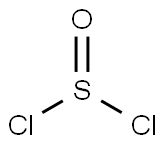
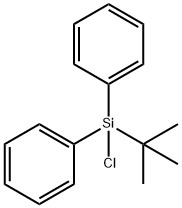

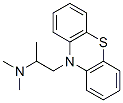
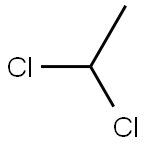
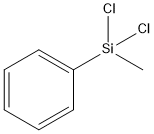
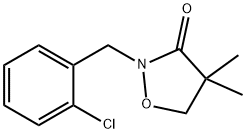
You may like
-
 19666-30-9 Oxadiazon 98%View Details
19666-30-9 Oxadiazon 98%View Details
19666-30-9 -
 Oxadiazon CAS 19666-30-9View Details
Oxadiazon CAS 19666-30-9View Details
19666-30-9 -
 Oxadiazon CAS 19666-30-9View Details
Oxadiazon CAS 19666-30-9View Details
19666-30-9 -
 1823368-42-8 98%View Details
1823368-42-8 98%View Details
1823368-42-8 -
 2-(3-(tert-butyl)phenoxy)-2-methylpropanoic acid 1307449-08-6 98%View Details
2-(3-(tert-butyl)phenoxy)-2-methylpropanoic acid 1307449-08-6 98%View Details
1307449-08-6 -
 Ethyl 3-(furan-2-yl)-3-hydroxypropanoate 25408-95-1 98%View Details
Ethyl 3-(furan-2-yl)-3-hydroxypropanoate 25408-95-1 98%View Details
25408-95-1 -
 2-Chloro-5-fluoro-1-methoxy-3-methylbenzene 98%View Details
2-Chloro-5-fluoro-1-methoxy-3-methylbenzene 98%View Details
1805639-70-6 -
 Lithium ClavulanateView Details
Lithium ClavulanateView Details
61177-44-4